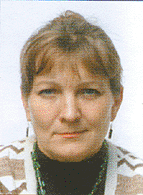A separate group in the work of the artist Vladimir Shandyba are works
post-avant-garde direction. Using the terms of contemporary art history, the artist invented
A hybrid of Ukrainian picturesqueness and Moscow's inclination to ridicule. This influence of the so-called
Mitkov with their banter, the provocative nature of the plot moves, the organic combination of the picturesque-
plastic and conceptual principles. The content of these works - socio-cultural aspects
reality, dramatic moments of human relations, philosophical parables.
The artist's works are struck by the high saturation of their depictively non-depictive
matter. It, as a rule, consists of emotionally meaningful images (fragments, scraps,
fragments), from bizarre figures that are strangely in the composition, its general context,
turn out to be mentally and psychologically charged, electrified, endowed with their own
mood, transmitted by the intense pulsation of forms, beating rhythm, chords and clots
color, sufficiently active and tense, piercing, sometimes even tragic-ominous.
The deep philosophy of Vladimir Shandybi's creativity, some of its aspects, is forced to find
analogues in some principles of the Eastern, in particular, Buddhist philosophy, with parallelism
phenomena, community search for the human spirit: the world as an eternal whirlwind, the wheel of life, life -
suffering, generates all life-giving, hence - the unity of man and animal, which take
Participation in the general chain of rebirths and whoever is a person today can become tomorrow
animals, and vice versa. The fulfillment of the law of karma, the retribution for past sins in other entities
existence can be felt in the work of the Wish Machine , where today the hand cock the trigger,
may tomorrow become a victim, or humanized Miracle Bird with overhead wings and tail,
which however will never become a pava, toy pink elephants, fascinated with
the voice of a fantastic orator-prophet on a tree.
The modernized Gogol taste of demonology, combined with elements of pop culture, the author's vision of the mental features of the manifestation of the Ukrainian phenomenon - Cossack Mamai , favorite work of the artist, his creative and author's credo. Vedic principles of the device Cossacks as a knightly order, militancy do not conflict with another essence ethnical code of the national phenomenon, that is, I would take a bandura, and played that knew , lit a pipe, tied his horse beside, sat down in a lotus pose, and under the noise of foliage and roar of the bandura immersed in meditation, and attained nirvana. Vladimir Shandyba emphasizes another thing - the extrasensory gift of the Cossack, then its superhuman manifestations, which borders on the evil spirit - who I, from where - you'll never know, indicated by the hot hellish color, in some red-hot substance of such a Cossack devil with a seductive warm body of a woman, like a ripe the fruit lies on the hands, and the expression playing on the strings of the soul acquires a polymetaphoreal content, as well as art criticism mantras on this topic can last indefinitely ... Endlessly traveling a lot and working in an open air, the artist has, for many years, cleared his palette and achieved a bright and emotional color. Among the landscapes there are no passageways , ordinary ones. It's always a romantic view, most likely in the past. Bright, sonorous, they attract attention emotional content of the depicted, ease of technique, coloring features of nature.
In the field of view of Vladimir Shandyby, dramatic moments of human relations most often fall. Provocative artistic language of the author allows you to unfold before the viewer an anamnesis of each personal psychohistory with its dramas, fears (and their own!). It is this personal appeal of the author, open, emotional, that causes the audience emotional response. The author demonstrates to us the content of his parables , although it seems that these peculiar matrices of human existence overlapped the destiny and behavior of each, as evidenced by the direct emanations of internal pictorial impulses and psychological content, where authorial expression is projected onto the iconographic motifs of the classical heritage. Typically, such works have several layers - author's, classic, original, and then - irrational, and vice versa. On the one hand, man is not protected from the action of elemental forces, tearing from the depths of his animal essence, the depths of the subconscious. They are sort of disconnected from his individual emotions, they are participants in a kind of ritual, doomed by destiny and their appointment to this or that action.
Hot museum coloring stereotypically always causes allusions with Rembrandt, although, according to experts, the combination of red-brown and gray-green is a priority in the visual perception of the slobozhanin. The internal stress of the work, which requires an exit, breaks the color planes, the contours of which are always blurred, they flow off with streaks, mixing and merging with each other, demonstrating the genuine energy of coloristic tension and the spontaneity of the pictorial gesture.
Romanticism of the XIX century (especially German in the face of the landscape painter Caspar Friedrich) and expressionism (Otto Dix and Gross) gave an unexpected alloy in the work of Vladimir Shandyba - the craving for different monsters did not lead the artist into the jungle of the aesthetics of anti-harmony and anti-beauty. Rather, they are mutants in the continuous process of transformation and mutation.
It is worth noting how the master treats cultural traditions and his own work. Always serious, it is marked by selfless aspirations to the service of art. The principle of making a picture, long-term work on it, numerous correspondence testify to the master's desire to give her being in time, to address the future.
The universalism of creativity, openness and interest in any information, all the while expand the circle of artistic interests of the master, which makes his artistic personality unique and unique.

